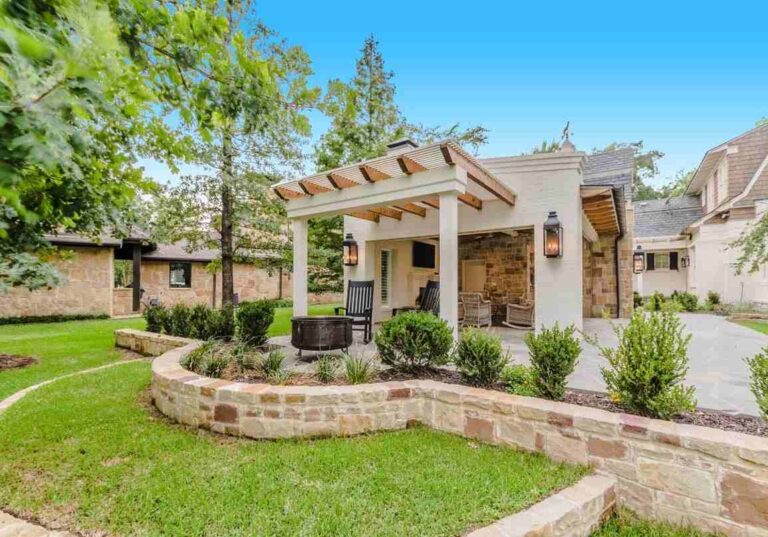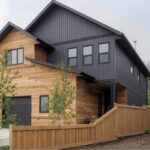Identifying ideal landscape design approaches transforms exterior environments from unremarkable to exceptional.
Many property owners experience difficulty making these decisions.
They feel overwhelmed considering the numerous available options.
Success involves understanding personal preferences, lifestyle requirements, and property-specific characteristics.
Following these seven fundamental recommendations helps discover design approaches reflecting personality while creating functional and attractive outdoor environments.
Evaluate Your Lifestyle and Needs
Your outdoor space should align with your lifestyle rather than an idealized version of how you imagine you should live. When selecting a design approach:
- Evaluate your daily patterns
- Social preferences
- Household needs
Families with small children require resilient plant varieties, secure walkways, and spacious recreational zones.
Those who host gatherings frequently may emphasize outdoor dining areas, atmospheric lighting, and social spaces.
Assess upkeep demands realistically.
If gardening serves as your passion, you might lean toward cottage-style designs featuring varied plantings and seasonal changes.
However, if you favor minimal maintenance approaches, sleek contemporary or Mediterranean themes with water-wise plants and simplified layouts could better match your preferences.
Your time availability, physical limitations, and maintenance budget should all influence your stylistic decisions.
Consider Long-Term Vision and Seasonal Interest
Consider the long-term development of your landscape beyond initial planting.
Trees and shrubs expand considerably across decades, possibly obscuring sightlines or dominating smaller specimens.
When placing permanent features, account for full-grown dimensions and anticipate how your care capabilities might shift as you age.
Year-round appeal keeps your landscape visually engaging across all seasons.
Summer-focused gardens can appear desolate during colder months without evergreen backbone plants or compelling bark patterns.
Coordinate successive flowering cycles, diverse leaf colors, and winter attractions like fruit or sculptural plant shapes.
Reflect on how your household’s requirements may transform over time.
Growing families might emphasize recreational zones that could eventually transition into social areas or tranquil retreats.
A comprehensive landscape maintenance guide can clarify the ongoing maintenance demands of various plant selections and design components, ensuring your investment stays attractive and practical for many years ahead.
Consider Your Climate and Environment
Effective landscape design collaborates with your regional climate instead of fighting it.
Investigate your growing zone, precipitation levels, soil characteristics, and seasonal climate trends.
These natural conditions will determine the feasible and enduring design approaches in your area.
Arid regions naturally support drought-adapted designs.
They incorporate cacti, decorative grasses, and sun-loving bushes.
Oceanfront locations can adopt coastal garden themes using salt-resistant plants and storm-proof installations.
Woodland settings offer possibilities for shaded gardens and organic designs that blend naturally with established trees and terrain.
Recognizing your surroundings enables you to select an approach that will flourish over time with limited maintenance.
Draw Inspiration from Multiple Sources
Broaden your design knowledge by investigating different sources of inspiration.
Explore local botanical gardens, attend neighborhood garden tours, and examine landscape architecture publications and periodicals.
Develop a compilation of images that interest you, observing recurring elements that consistently appear in your choices
Social media platforms and design websites provide unlimited inspiration.
Always modify concepts to your particular situation rather than replicating them precisely.
Identify trends in your preferences concerning color palettes, plant varieties, hardscape materials, and general arrangement.
This exploration stage assists you in expressing your preferences and communicating clearly with landscape experts if you decide to employ them.
Set Realistic Budget Parameters
Set a practical budget during early planning stages to prevent letdowns and inform your stylistic choices.
Straightforward, organic designs generally require lower installation investments than structured gardens needing extensive stonework and specialty plants.
Evaluate installation scheduling and development phases.
Many thriving landscapes mature across multiple years, enabling property owners to distribute expenses while discovering optimal approaches for their particular environment.
Essential zones like front entrances and primary outdoor curtain areas can receive initial attention, with remaining sections addressed subsequently.
Include long-term care expenses in your financial planning.
Specific design approaches demand professional servicing, seasonal plant updates, or specialized tools.
Alternative styles depend on hardy plants and basic maintenance practices that property owners can readily handle independently.
Test Your Ideas with Small Projects
Instead of immediately pursuing a complete landscape transformation, evaluate your design ideas through limited projects.
Develop a trial planting bed, construct a compact outdoor seating space, or revamp your entry area to explore your selected approach.
These experimental efforts let you adjust your tastes, evaluate plant pairings, and gauge upkeep demands before committing to significant expenditures.
Small-scale experimentation also builds your design confidence and hands-on abilities.
You may find that certain care activities prove more enjoyable than anticipated, or that particular plant groupings perform differently than your expectations suggested.
This gradual method produces superior outcomes and minimises the potential for expensive errors or aesthetic disappointments.
Start with a Cohesive Color Palette
Color establishes visual harmony foundations within landscape designs.
Select palettes that complement residential exterior colors while reflecting personal preferences.
Some designers prefer monochromatic approaches utilizing various single-colour gradations, while others implement complementary or analogous color combinations, creating dynamic effects.
When creating your palette, account for both leaf and flower tones.
Green alone offers unlimited diversity, from pewter-toned evergreens, bright yellow-green hostas, and rich dark emerald bushes.
Year-round appeal demands orchestrating spring bulbs, summer flowering plants, fall color displays, and winter architectural forms.
A thoughtfully developed color strategy connects various landscape components and establishes elegant visual continuity across your outdoor space.
Endnote
Identifying ideal landscape design approaches requires thorough consideration regarding multiple factors, spanning architectural compatibility through personal preferences and site conditions.
By implementing these seven recommendations and dedicating appropriate evaluation time, you’ll develop outdoor space environments that provide extended enjoyment while representing your unique vision and lifestyle requirements.



